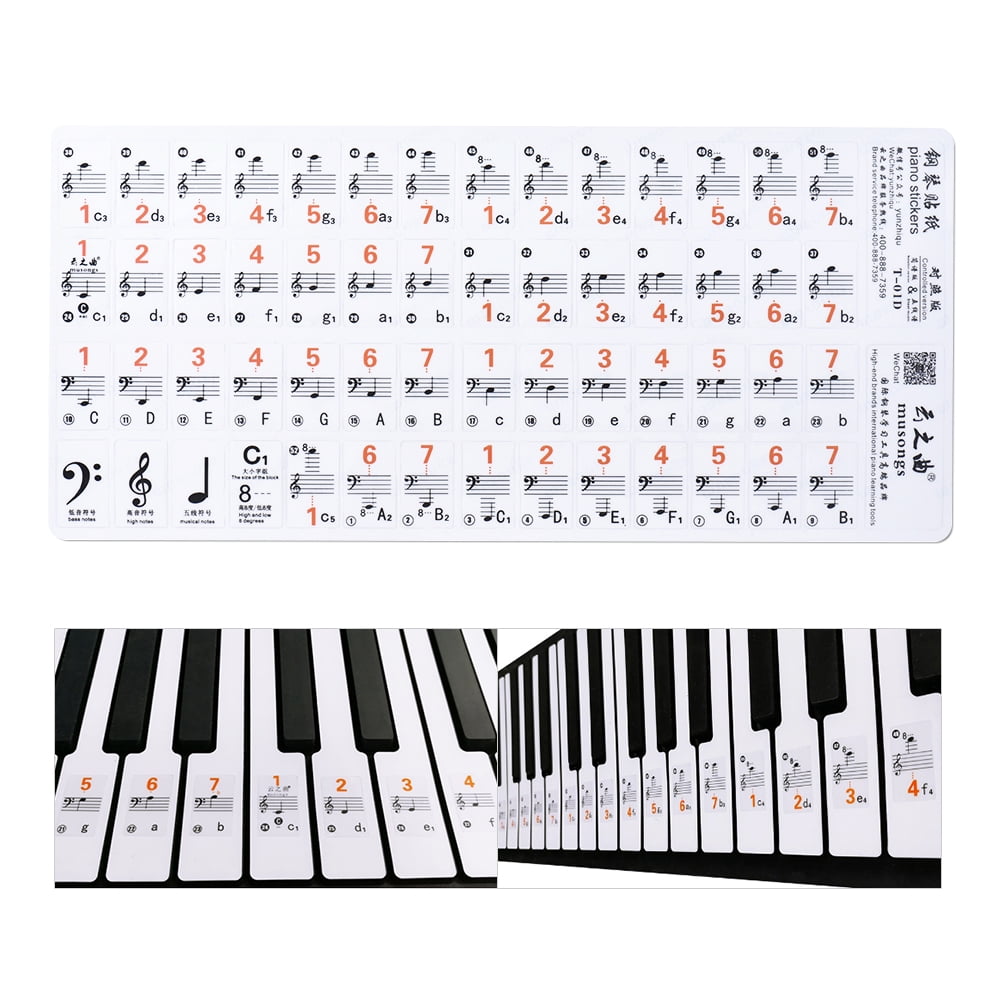
You may be asking “I thought that there were only 7 notes in the musical alphabet!?” That is true, but there are actually technically 12 different notes! The 12 notes are: The black keys are in groupings and help us quickly identify the note names of the white keys. within each group of 12 notes, there are 7 white keys and 5 black keys.
Music keys on piano full size#
A full size piano has 88 keys, but it would be very difficult to find notes without some repeating pattern! Therefore, those 88 keys are divided into repeating groups of 12 notes. The answer lies in the fact that we needed a way to break apart the piano keyboard into sections so that we can easily play music. The pattern of black and white on the piano keys is immediately recognizable: once you see it, you immediately know that these are piano keys and not anything else. (don’t look at the pic above this post – no cheating!)ĭid you get it right? Remember how there was a similar experiment when people were asked to draw a bicycle and some of these drawings came out hilariously wrong? Chances are that your piano keyboard didn’t come out quite right either, but no worries, we’ll make you understand it once and forever, after explaining all the keys in depth. The keyboard player is restricted by its limited number of keys, and frequently has to adapt the music to it by playing an octave higher and lower than originally intended.įor a wide variety of courses in playing the keyboard please visit our online catalog of piano courses.Let’s start with a quick funny experiment: take a blank piece of paper and try drawing a piano keyboard without looking at one.
Music keys on piano portable#
Considering how big or small it is and what it is used for, a portable keyboard can have as little as 24 keys. It is highly unusual but possible for a portable, electronic keyboard to have all 88 keys. The right hand is usually used to play the song’s melody, while the left hand supports the melody with a harmony of some kind. As a basic rule, the left hand is used to play the lower notes that appears on the bass clef, while the right hand is used to play notes on the treble clef. Sometimes the music calls for all ten fingers to be playing a piece as written. The required strength and flexibility are built up over time, using certain, specific exercises designed to do this. Pianists face many challenges, including developing the ability to stretch their hands and fingers far enough to reach all of the keys needed to play certain groups of notes that produce chords or arpeggios. The basic framework for the scales and chords is provided by the octaves. Another octave up the scale, the next higher A measures 1760 hz. Let’s look at an A, which is measured at 440hz, then the A above (an octave higher) which measures 880hz. Pitch (hz) is a measure of cycles per second. Notes are measured by their pitch (a specific note or tone). Even if played an octave apart, notes that carry the same pitch have the same name - so you can play an A, then play another A an octave higher or lower. An octave is defined as a note that is one full scale higher or lower than the original note (the first and last note of a scale). You can also examine the octaves of a piano keyboard. Playing left to right will cause ascending tones to play, while playing right to left has the opposite effect, resulting in descending tones. The piano can accommodate you playing any musical scale simply find your starting note, and play the remaining notes of the scale in the correct order. Some people believe that the piano is based on the C scale, but that is not so. You will see alternating black and white keys all the way up the keyboard, except there are no black keys between the B and C or between the E and F because there are no black keys between those notes. Piano keys are laid out in what are called semitones, or half steps, and are arranged to follow a chromatic scale (each key is one half step away from the adjacent one). (This is an over-simplification, but this is an article for pure beginners.) The first key (on the leftmost side of the keyboard) is an A and the final key (on the rightmost side) is a C. The keyboard has white keys that are tuned to play “natural” notes, and black keys that are tuned to play flat and sharp notes.

When depressing the keys, you trigger hammers inside the piano to hit strings, which is what produces the sound. A piano has 88 keys, 36 are black and 52 are white.


 0 kommentar(er)
0 kommentar(er)
